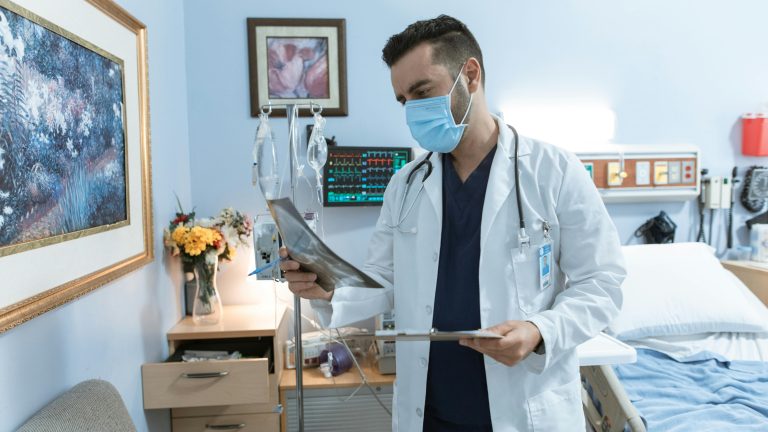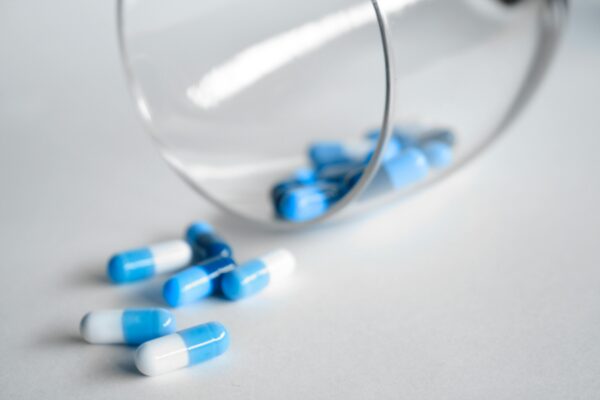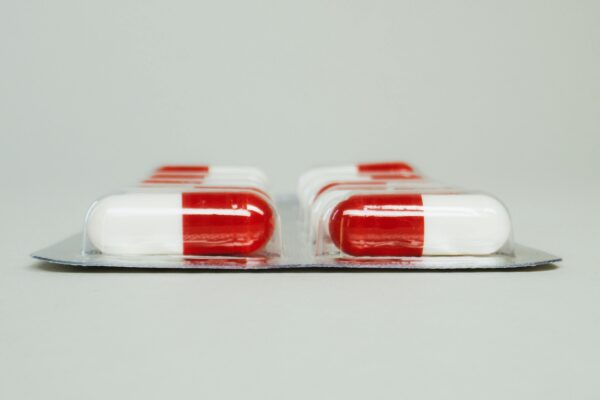Erectile dysfunction (ED) is a significant concern for men who have undergone prostate surgery, specifically radical prostatectomy. The relationship between prostate surgery and ED is well-documented, as the procedure can impact the nerves and blood vessels necessary for achieving and maintaining an erection. In this article, we provide an in-depth analysis of erectile dysfunction post-prostate surgery, exploring the causes, treatment options, and strategies to improve sexual health and quality of life for affected individuals.
- Understanding the Causes of Erectile Dysfunction After Prostate Surgery
- Post-Surgical Recovery of Erectile Function
- Treatment Options for Erectile Dysfunction After Prostate Surgery
- Prevention and Early Intervention
- Conclusion
- Sources and Studies
- FAQs: Erectile Dysfunction After Prostate Surgery
- Question: What is erectile dysfunction after prostate surgery?
- Question: What factors influence the recovery of erectile function after prostate surgery?
- Question: What are the common treatments for erectile dysfunction after prostate surgery?
- Question: How long does it typically take to recover erectile function after prostate surgery?
- Question: Are there any preventive measures to minimize erectile dysfunction after prostate surgery?
Understanding the Causes of Erectile Dysfunction After Prostate Surgery
Erectile dysfunction following prostate surgery is primarily caused by damage to the nerves, blood vessels, and muscles that control erection. The extent of ED varies based on several factors:
- Nerve-Sparing Techniques: During prostate surgery, the surgeon may attempt to preserve the nerves that run alongside the prostate, which are crucial for erectile function. However, even with nerve-sparing techniques, there is no guarantee that these nerves will remain fully functional after surgery.
- Extent of Cancer Spread: The aggressiveness and spread of prostate cancer often dictate how much tissue and how many nerves must be removed. More extensive surgery typically results in a higher likelihood of erectile dysfunction.
- Pre-existing Erectile Function: Men with strong erectile function before surgery are more likely to recover some degree of function after surgery. Conversely, those with pre-existing ED may experience more severe and long-lasting symptoms post-operatively.
- Age and Overall Health: Younger men and those in good health tend to have better outcomes regarding the recovery of erectile function after surgery.
Post-Surgical Recovery of Erectile Function
The recovery of erectile function after prostate surgery is a gradual process that can take several months to years. The timeline and extent of recovery depend on various factors, including the type of surgery performed, the patient’s age, and pre-surgery erectile function.
- Early Recovery Phase (First 3-6 Months): During this period, it is common for men to experience significant erectile dysfunction as the body heals. Nerve regeneration can take time, and immediate erectile function is unlikely.
- Ongoing Recovery (6-24 Months): Many men see gradual improvements in erectile function during this period. This recovery process may be aided by the use of medications, devices, and other interventions, which will be discussed in detail later in this article.
- Long-Term Outlook (2+ Years): For some men, erectile function may continue to improve beyond the two-year mark. However, in cases where significant nerve damage has occurred, some degree of erectile dysfunction may be permanent.
Treatment Options for Erectile Dysfunction After Prostate Surgery
There are several treatment options available to help men manage erectile dysfunction following prostate surgery. These treatments can be tailored to individual needs and preferences, ensuring that each patient receives the most appropriate care.
1. Oral Medications
The first line of treatment for erectile dysfunction after prostate surgery typically involves oral medications known as phosphodiesterase type 5 inhibitors (PDE5 inhibitors). These medications, including sildenafil (Viagra), tadalafil (Cialis), and vardenafil (Levitra), work by enhancing blood flow to the penis, facilitating the ability to achieve and maintain an erection.
Effectiveness: PDE5 inhibitors are generally effective in men who have undergone nerve-sparing prostate surgery. However, their effectiveness may be reduced in cases where significant nerve damage has occurred.
Side Effects: Common side effects include headaches, flushing, nasal congestion, and indigestion. Rarely, these medications can cause more serious side effects, such as changes in vision or hearing.
2. Vacuum Erection Devices (VEDs)
Vacuum erection devices are another non-invasive option for men experiencing erectile dysfunction after prostate surgery. These devices consist of a plastic cylinder placed over the penis, creating a vacuum that draws blood into the penis, resulting in an erection. A constriction ring is then applied at the base of the penis to maintain the erection.
Effectiveness: VEDs can be particularly useful for men who cannot use oral medications or prefer a non-pharmacological approach. They are also recommended during the recovery phase as a way to promote blood flow to the penis and prevent tissue atrophy.
Side Effects: Some men may experience discomfort, bruising, or numbness when using a VED. Proper usage and technique can minimize these side effects.
3. Penile Injections
Penile injections involve the direct administration of medication into the penis to induce an erection. Commonly used medications include alprostadil, papaverine, and phentolamine. These medications work by relaxing the blood vessels and muscles in the penis, allowing increased blood flow.
Effectiveness: Penile injections are highly effective, even in cases where oral medications have failed. They can produce a reliable and firm erection suitable for sexual intercourse.
Side Effects: The most common side effects are pain at the injection site, prolonged erection (priapism), and fibrosis (scarring) within the penis.
4. Penile Implants
Penile implants are a surgical option for men who do not respond to other treatments for erectile dysfunction. There are two main types of implants: inflatable implants and semi-rigid (malleable) implants. Inflatable implants consist of cylinders placed inside the penis, which can be inflated to achieve an erection. Semi-rigid implants are flexible rods that provide a permanently firm penis.
Effectiveness: Penile implants have a high satisfaction rate among men and their partners. They offer a permanent solution to erectile dysfunction and allow for spontaneous sexual activity.
Side Effects: Risks associated with penile implants include infection, mechanical failure, and erosion of the implant. However, these risks have decreased significantly with advances in surgical techniques and implant design.
5. Lifestyle Modifications and Psychological Support
In addition to medical and surgical treatments, lifestyle changes can play a crucial role in managing erectile dysfunction after prostate surgery. Regular exercise, a healthy diet, and avoiding smoking and excessive alcohol consumption can improve overall health and erectile function.
Psychological Support: Erectile dysfunction can have a profound impact on a man’s mental and emotional well-being. Counseling or therapy, either individually or with a partner, can help address issues such as anxiety, depression, and relationship difficulties that may arise from ED.
Prevention and Early Intervention
Preventing erectile dysfunction before and after prostate surgery involves early intervention and proactive management. Here are some strategies to consider:
- Pre-Surgery Counseling: Discussing the potential risks of erectile dysfunction with your surgeon before surgery can help set realistic expectations and allow for early planning of post-surgery treatment options.
- Early Use of PDE5 Inhibitors: Some studies suggest that early use of PDE5 inhibitors after surgery may aid in the recovery of erectile function by promoting blood flow and nerve healing.
- Regular Follow-Up: Regular follow-up with a healthcare provider ensures that any issues related to erectile dysfunction are addressed promptly, allowing for timely adjustments to treatment plans.
Conclusion
Erectile dysfunction after prostate surgery is a challenging but manageable condition. With the right combination of treatments, lifestyle changes, and psychological support, many men can regain satisfactory erectile function and enjoy a fulfilling sex life. It is essential to work closely with healthcare providers to develop a personalized plan that addresses individual needs and circumstances.
Testosterone and Prostate Cancer: Understanding the Controversies and Realities
Sources and Studies
To provide accurate and reliable information, this article references the following sources and studies on erectile dysfunction after prostate surgery:
- “Erectile Dysfunction Following Radical Prostatectomy: A Review”
This review article provides a comprehensive analysis of erectile dysfunction in patients who have undergone radical prostatectomy. It discusses the prevalence, causes, and recovery of erectile function.
Link to study - “Nerve-Sparing Radical Prostatectomy: Long-Term Outcomes”
This study explores the effectiveness of nerve-sparing techniques in preserving erectile function after prostate surgery. It provides data on long-term outcomes and the factors that influence recovery.
Link to study - “Phosphodiesterase Type 5 Inhibitors in the Treatment of Erectile Dysfunction After Radical Prostatectomy”
This article reviews the use of PDE5 inhibitors, such as sildenafil and tadalafil, in treating erectile dysfunction after prostate surgery. It evaluates their efficacy, safety, and impact on quality of life.
Link to study - “Penile Rehabilitation After Prostate Surgery: A Systematic Review”
This systematic review examines various penile rehabilitation strategies, including the use of vacuum erection devices, penile injections, and implants, to improve erectile function post-surgery.
Link to study - “Psychological Impact of Erectile Dysfunction Following Prostate Cancer Treatment”
This study highlights the psychological and emotional effects of erectile dysfunction on men who have undergone prostate cancer treatment, emphasizing the importance of psychological support.
Link to study
Testosterone and Prostate Health: Dispelling Myths and Understanding Risks
FAQs: Erectile Dysfunction After Prostate Surgery
Question: What is erectile dysfunction after prostate surgery?
Erectile dysfunction (ED) after prostate surgery refers to the difficulty in achieving or maintaining an erection following procedures like radical prostatectomy. This condition is often a result of nerve and blood vessel damage during the surgery.
Question: What factors influence the recovery of erectile function after prostate surgery?
Recovery of erectile function post-surgery depends on several factors including the extent of nerve damage, the effectiveness of nerve-sparing techniques, the patient’s age, overall health, and pre-surgery erectile function. The use of rehabilitation strategies also plays a significant role.
Question: What are the common treatments for erectile dysfunction after prostate surgery?
Common treatments for erectile dysfunction after prostate surgery include oral medications (PDE5 inhibitors), vacuum erection devices, penile injections, and penile implants. Each treatment option varies in effectiveness and suitability depending on individual circumstances.
Question: How long does it typically take to recover erectile function after prostate surgery?
The recovery of erectile function after prostate surgery can take several months to years. Initial recovery may be slow, with gradual improvements over time. The extent of recovery depends on individual factors including the type of surgery performed and pre-existing erectile function.
Question: Are there any preventive measures to minimize erectile dysfunction after prostate surgery?
Preventive measures include discussing potential risks with the surgeon before the procedure, using medications or devices early in the recovery process, and making lifestyle changes such as regular exercise and a healthy diet. Early intervention and regular follow-ups with healthcare providers are also crucial.
Testosterone and Erectile Dysfunction: Addressing Performance Issues in Men





